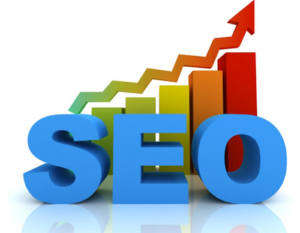Sugar Land Web Design is the process of creating attractive, user-friendly websites. It includes visual and UX design, web graphics, page templates, and prototyping.
A good website provides a unique brand identity and captivates visitors. It also helps grow your business by ranking higher on Google search results. To achieve these goals, you need to have exceptional Web Design.

The user experience of a website is how easy it is to navigate and understand the content. This includes how fast the site loads and whether the website feels secure and legitimate – particularly important if it involves e-commerce or user input such as email addresses. A website’s user experience also depends on how well it meets the visitor’s expectations and goals. A good website will have clear messaging and navigation to guide the visitor toward a profitable end goal, whether that is purchasing a product or service, filling out a contact form, downloading a white paper or brochure, or taking another desired action.
Web Design is the process of designing a website, including its interface and architecture. This includes the layout, graphics, and color scheme. It also encompasses the user experience and content organization. It is closely related to front-end development (including writing markup) and partially overlaps with web engineering.
The term “web design” is often used interchangeably with web development, but they are distinct disciplines. Web Design focuses on the visual design of a website, while web development encompasses the entire technical aspect of building the website.
User interface design (UI) is a part of Web Design, but it focuses more on the immediate interaction with the website’s interface and how satisfying the website is to use. It can include things like the positioning of callouts, CTA buttons, and featured or related content suggestions on a page. It can also involve arranging content logically on a page, for example using a navigation bar at the top of the page to help people find what they are looking for.
A great example of a website with superb user interface is WeTransfer, the popular file transfer service. The service is simple, intuitive, and works very well on mobile devices. In addition, the UI shows restraint by not being over-cluttered and is extremely efficient in terms of the time it takes to load. This is very much in line with Fitt’s law which states that the amount of time it takes to move a mouse or cursor to an area on the screen inversely proportional to the size of the area being moved to.
Navigation
Web design is a complex process that requires a unique blend of artistic creativity and technical prowess. It involves creating a digital space that conveys a brand’s identity and provides a seamless user experience. Its various components include web layout, content creation, and navigation. It also involves incorporating new technologies and features. The future of web design is expected to be more interactive and immersive, allowing users to experience the world in a different way.
Website navigation refers to the system of methods and mechanisms that a user employs in order to find information on a website. It is crucial that web designers consider the user’s needs and expectations when designing a navigation system for their site. The best websites have an intuitive structure that is easy to follow.
Traditionally, website navigation has been a visual element on a page. It consists of a set of links and buttons that are placed in the header or footer of the website to allow the user to access other pages and sections. While this is an effective approach to website navigation, there are many other ways to create a simple and easy-to-use navigation system.
For example, using a hamburger menu on the top of the page can be a great alternative to traditional navigation. This type of menu is particularly useful on mobile devices, where users have limited space to work with. It also allows for more flexibility in the placement of the menu and in the number of links that it contains.
Another important aspect of website navigation is ensuring that the links are properly labeled. This ensures that the links are easily recognizable, especially when used in conjunction with other elements such as images and videos. The proper labeling of links can also help to improve SEO.
In addition, it is important to use consistent naming conventions when creating website navigation. This helps to prevent confusion and makes it easier for search engines to index a website. It is also recommended that you test your website’s navigation with as many users as possible.
Content
Ensure that your content is clear and easily understood. Consider how your web design will achieve expected results (downloads, sales, reservations, engagement etc). Make sure feedback is easily identifiable (e.g. in form fields or error messages). Prioritize information, use visual hierarchy and white space to group related content. Use a search bar to enhance user engagement.
Consider progressive enhancement (Wikipedia) or adaptive design patterns, which display essential information first and allow browsers to load supplementary content subsequently. This allows users to access the core functionality without the need for JavaScript or other additional software. Also, providing alternate text for images, descriptions for videos, and captions for audio helps make websites accessible.
Design
The web design landscape is constantly changing and evolving, and staying on top of the latest tools, trends, and best practices is essential to success. This can be challenging, but it’s also an exciting part of the field. The right tools can help you create beautiful, responsive websites that will engage your users and drive traffic. The right website design can help you build a strong brand identity and make your business stand out from the competition.
In the past, web design largely focused on the aesthetics of websites but in recent years it has become increasingly important to consider the user experience. Websites that are hard to navigate or take a long time to load will frustrate visitors and cause them to leave your site. Web designers work to ensure that sites are easy to use and accessible for all users.
Web design encompasses several different disciplines, including web graphic design; interface design; authoring, such as standardised code and proprietary software; and user experience design. In some cases, individuals may specialize in one or more of these fields. Web design is distinct from web development, which involves the back-end engineering of a website, including writing markup. The two processes overlap at times, and some web designers have skills in both web design and web development.
The most common types of websites are informational, commercial, and social media. E-commerce websites enable people to buy and sell products or services online. Informational websites provide valuable content and serve as reference materials for users. Social media websites allow people to share content with friends and followers. E-commerce websites require specialized security features to protect user data and prevent hacking.
A web designer’s job is to create a unique, eye-catching website that appeals to users and meets the client’s needs. This includes ensuring that the site is mobile friendly, follows accessibility guidelines, and is easily searchable. Web designers often have a strong visual sense and are able to translate that into effective web pages.
The most successful websites are visually appealing and easy to navigate. They also feature well-organized content that supports the goals of the website’s users. The web design process involves a series of iterations and reviews to refine the final product. Web designers often use wireframes and prototypes to guide the development process.

